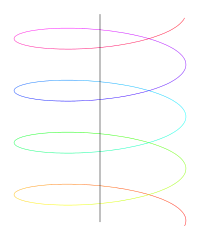Chasles' theorem (kinematics)

Okay, kiddo, have you ever played with toy cars? Imagine you have two toy cars, and they’re driving around on a big, flat table.
Chasles' theorem is like a rule that tells you how one car can move around on the table in the same way as the other car, even if it looks like they’re going in different directions.
Let’s say one car is driving in a straight line and the other car is making a turn. Chasles’ theorem says that you can still move the first car in the same way as the second car, as long as you make it turn in a different direction, but by the same amount.
That’s kind of like magic, isn’t it? But it’s really just a fancy way of talking about how things move and rotate in space. Scientists and engineers use Chasles' theorem to figure out all kinds of things, like how space shuttles move in outer space or how robots move their arms and legs.
So, the next time you’re playing with your toy cars, think about how Chasles' theorem is making them move in tricky and interesting ways!
Chasles' theorem is like a rule that tells you how one car can move around on the table in the same way as the other car, even if it looks like they’re going in different directions.
Let’s say one car is driving in a straight line and the other car is making a turn. Chasles’ theorem says that you can still move the first car in the same way as the second car, as long as you make it turn in a different direction, but by the same amount.
That’s kind of like magic, isn’t it? But it’s really just a fancy way of talking about how things move and rotate in space. Scientists and engineers use Chasles' theorem to figure out all kinds of things, like how space shuttles move in outer space or how robots move their arms and legs.
So, the next time you’re playing with your toy cars, think about how Chasles' theorem is making them move in tricky and interesting ways!
